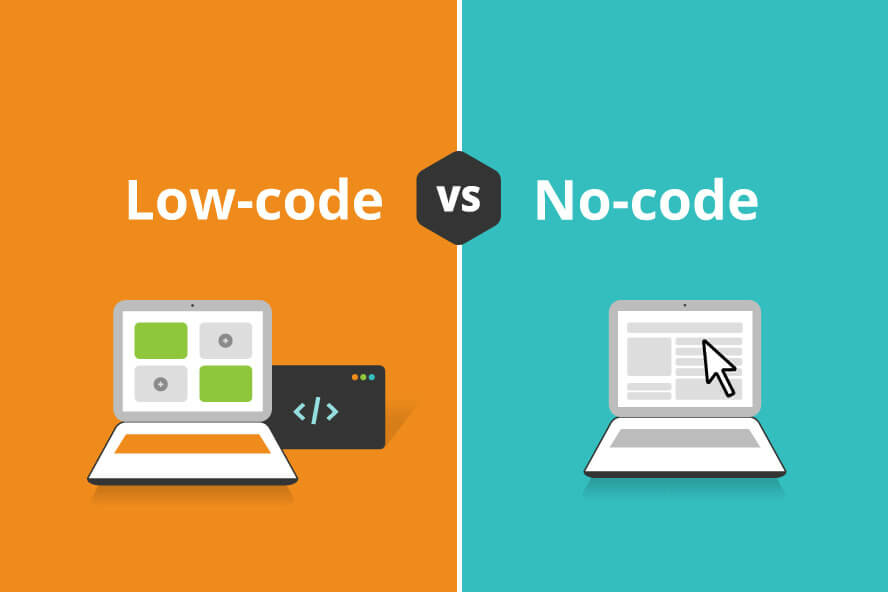
Low code and no code are terms used to describe platforms and technologies that allow users to build custom software applications without writing code.
Low code platforms provide a visual development environment with drag-and-drop components and pre-built templates that can be used to build custom applications. Low code platforms typically also allow some level of custom coding, so developers can add custom functionality or make other modifications as needed.
No code platforms, on the other hand, aim to eliminate the need for coding altogether. Users can build applications using only visual tools, such as drag-and-drop components, forms, and workflows.
Low code and no code platforms are designed to make it easier for organizations to build custom applications without requiring specialized programming skills or a large IT staff. They can help organizations to improve their productivity, reduce their costs, and speed up the development of custom software solutions.
Here are the top 10 capabilities for a no code/low code platform:
- Visual development environment: A visual development environment provides a drag-and-drop interface for building applications without writing code.
- Data integration: The ability to integrate with multiple data sources, such as databases, cloud services, and APIs, to build applications that can connect to a wide range of systems and data.
- Pre-built components: A library of pre-built components, such as forms, tables, and charts, that can be used to quickly create common application elements.
- Workflow automation: The ability to automate business processes and workflows using visual tools, without writing code.
- Custom user interfaces: The ability to create custom user interfaces using drag-and-drop components or pre-built templates.
- Mobile app development: The ability to build mobile applications that can be deployed to mobile devices, such as smartphones and tablets.
- Business intelligence: The ability to create interactive dashboards and reports to provide business insights and analytics.
- Collaboration and teamwork: Features that support collaboration and teamwork, such as version control, project management, and shared development environments.
- Deployment and hosting: The ability to deploy applications to a cloud-based hosting environment, and manage the deployment process, including versioning and scaling.
- Security and compliance: Features that support security and compliance, such as user authentication, data encryption, and auditing.
These are some of the key capabilities that organizations look for in a no code/low code platform, and the specific capabilities will vary depending on the needs and requirements of the organization.
Here is a comparison of the top three no code/low code platforms:
- Salesforce Omnichannel Studio: Salesforce Omnichannel Studio is a no-code/low-code platform that provides a visual development environment for building customer service applications. It allows users to build custom user interfaces, automate workflows and processes, and integrate with other systems without writing code.
- PowerApps: PowerApps is a no-code/low-code platform developed by Microsoft. It enables users to build custom business applications by connecting to data sources, such as Excel and SharePoint, and using drag-and-drop components to create user interfaces. PowerApps also provides a wide range of pre-built templates and connectors to common services, such as Microsoft Dynamics and Office 365.
- Appian: Appian is a low-code platform that provides a visual development environment for building custom applications. It provides a wide range of tools for creating user interfaces, automating business processes, and integrating with other systems. Appian also offers a library of pre-built templates, connectors, and components to help speed up the development process.
In summary, these three platforms provide similar capabilities, but each has its own strengths and weaknesses, and the best platform for an organization will depend on their specific needs and requirements.
The amount of money that an enterprise can save by implementing low code or no code solutions will depend on several factors, including the size of the organization, the complexity of its software development needs, and the number of applications that it needs to build.
However, some of the key benefits of low code and no code platforms that can help organizations to save money include:
- Reduced development time: Low code and no code platforms can reduce the time required to develop custom applications, which can result in significant cost savings.
- Reduced dependency on IT: With low code and no code platforms, business users and non-technical stakeholders can build and deploy applications, reducing the reliance on IT departments and cutting costs.
- Improved efficiency: Low code and no code platforms can automate repetitive and time-consuming tasks, improving the efficiency of software development and freeing up resources to focus on other tasks.
- Lower costs for custom software: Building custom applications with low code or no code platforms is generally less expensive than traditional custom software development, which can result in substantial cost savings for organizations.
- Flexibility: Low code and no code platforms allow organizations to quickly and easily adapt to changing business needs and requirements, which can result in cost savings over time.
It’s difficult to quantify the exact amount of money that an enterprise can save with low code or no code solutions, as the savings will depend on the specific needs and requirements of the organization. However, many organizations have reported substantial cost savings and improved efficiency with low code and no code platforms.
